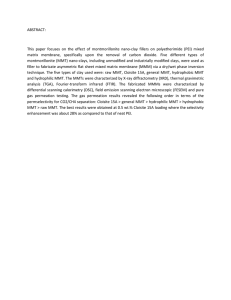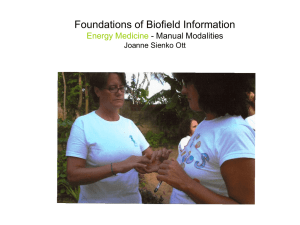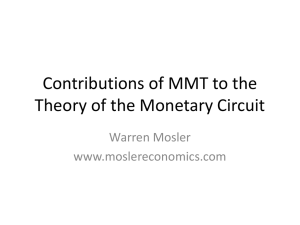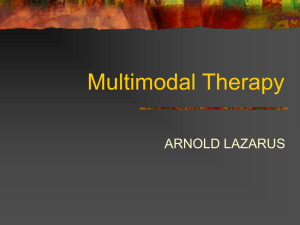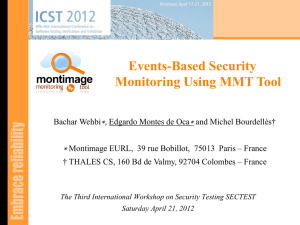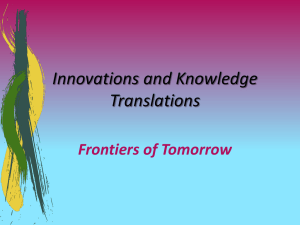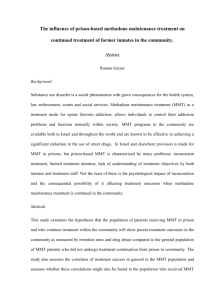“Gender Empowerment and Access to Financial Services in Machakos County, Eastern Kenya”
advertisement
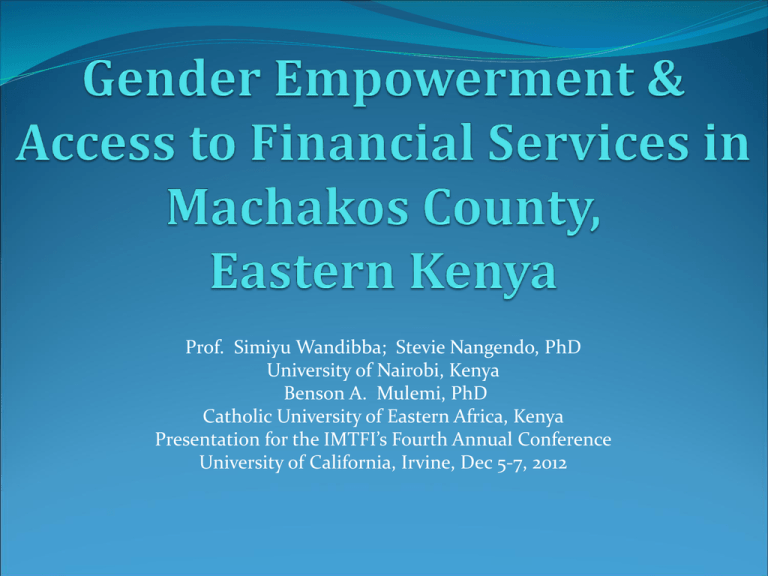
Prof. Simiyu Wandibba; Stevie Nangendo, PhD University of Nairobi, Kenya Benson A. Mulemi, PhD Catholic University of Eastern Africa, Kenya Presentation for the IMTFI’s Fourth Annual Conference University of California, Irvine, Dec 5-7, 2012 Outline Introduction Statement of the Problem Research questions Study objectives Methodology: site & population Sampling & Data collection Preliminary results: MMT/Banking access & coverage; Gender utilization barriers &patterns; MMT/M-Banking & Gender Empowerment; Access and perceived benefits; Consequences for gender relations. Conclusion •Interest about access to financial Introduction services among the poor in marginal areas of low-income countries is increasing. •Mobile money transfer (MMT)services have the potential to increase financial inclusion in Kenya. •Competing providers: Safaricom Ltd (M-Pesa), Airtel Kenya Ltd. (Airtel money), Essar Telekom Kenya Ltd.(yuCash), Orange Kenya Ltd. (Orange money), PesaPoint, Tangaza & Mobikash partner with local Banks. Statement of the Problem New financial service technologies embody gender differences & are socio-cultural constructs like gender empowerment. There are few studies on interlinkages between gender empowerment & financial inclusion in the banking institutions and MMTS in Kenya as in other low income countries. Research Questions What business strategies do mobile financial platforms in the study region use? How do MMT remittance & payment flows differ along gender lines in the study area? What barriers do each gender face when using mobile money systems? What m-banking/m-payment behaviors do men and women exhibit? How do MMT services affect gender relations in the study region? Study objectives To analyze the business strategies of the mobile financial platforms in the study region. To track remittance and payment flows along gender lines in the MMT systems. To determine the barriers that each gender faces when using mobile money services. To analyze the differences in MMT service use behaviors among men &women. To determine how MMT services affect gender relations in the study region. Methodology: site & population The research is being conducted in Machakos County in eastern Kenya. Three administrative divisions covered: Kinanie/Mathatani, Kangundo & Matungulu. Study population: men & woman 18 years of age & above; representatives of mobile money transfer systems/platforms. Study site Study site-2 Sampling & Data collection Purposive sampling: mobile phone owners/ MMT service users. Targets 450 (75 male & 75 female) MMT users in 3 administrative divisions. Instruments: interview guide/questionnaire 255 respondents interviewed to date. 6 focus group discussions to be held; 2 in each administrative division. In-depth interviews with 3 key informants in each division to be conducted. Preliminary Results: MMT/Banking access & Coverage Concentrated in relatively high population density areas: townships, & shopping centers. A majority of the respondents own mobile phones and have ever used MMT services; for 2-10 years. Country-wide dominance of Safaricom ltd.(M-Pesa) replicated. MMT in micro-entrepreneurship; small business loans transactions, domestic maintenance, payment of school fees & various bills Gender utilization barriers & patterns Network delays, shortage of ‘float’ and fear of fraud or conmanship. Lack of handsets, user registration & identification document inconvenience. Women receive money more than men for small-scale business, family maintenance. Women most recipients of MMT as support from spouses, sons & relatives away in towns. Access & perceived benefits Convenient, affordable, accessible, instant way of accessing financial resources. Convenient alternatives to banks and other financial transaction modes. Fees charged on MMT transactions lower relative to bank charges. Reduced waiting time relative to bank and other counter queues. Figure 1: % Subscription market Share per operator Source: CCK, Operators’ Returns . 2012 MMT, M-Banking & Gender Empowerment MMT part of ‘economy of affection’ & social capital among spouses; and in courtship relationships. Boost household livelihood by supporting women’s businesses. MMT pay for merchandise obtained on credit. MMT/M-banking contribute to Women’s basic financial and social empowerment. Facilitate women’s access to cash for family needs. Consequences for Gender relations Negative: Role conflicts, strain & abdication, especially among men. Suspicion and mistrust about real family income, misuse, and sources of remittances. Positive: Strengthen kin & non-kin bonds through ready support for social & cultural events: e.g. funerals, parties & fundraising. Improve family relations as women’s role in livelihood security efforts and financial participation increase. Conclusion Competing MMT & M-Banking platforms in Kenya coincide with growing interest in financial inclusion of the poor. This trend has the potential to enhance livelihood, but it is necessary to analyze and evaluate the implications of gender financial empowerment on the social lives of the targeted poor people. The relevance of mobile financial platforms’ business strategies to sustainable financial inclusion and social development is essential.
